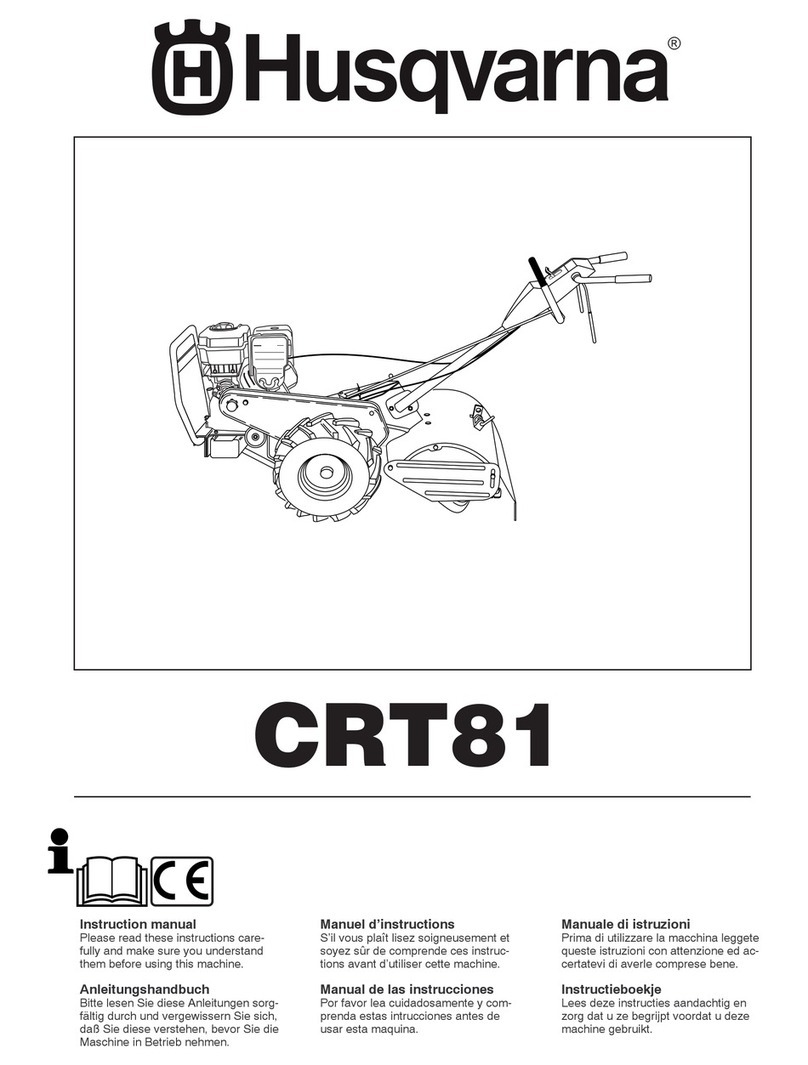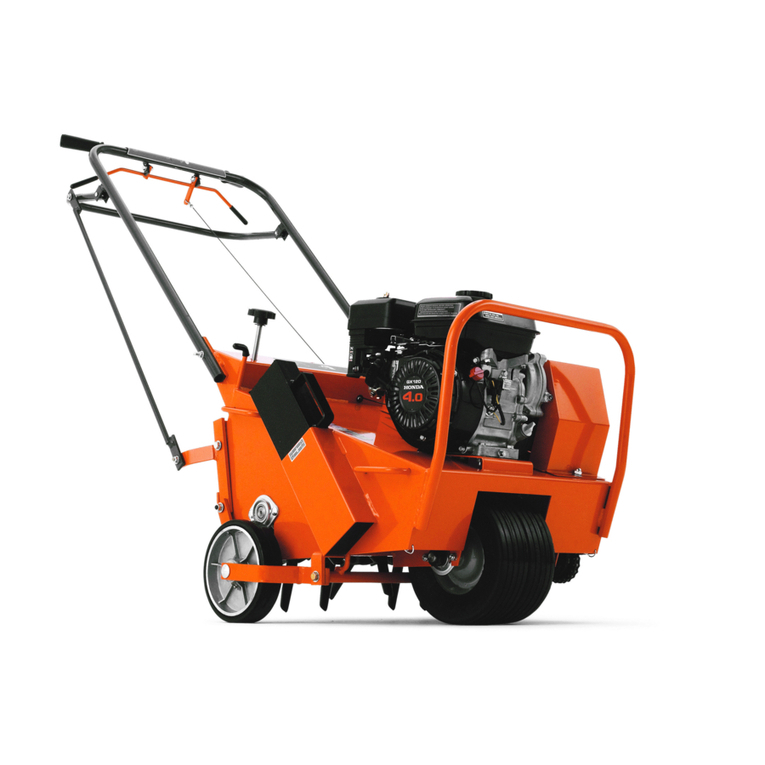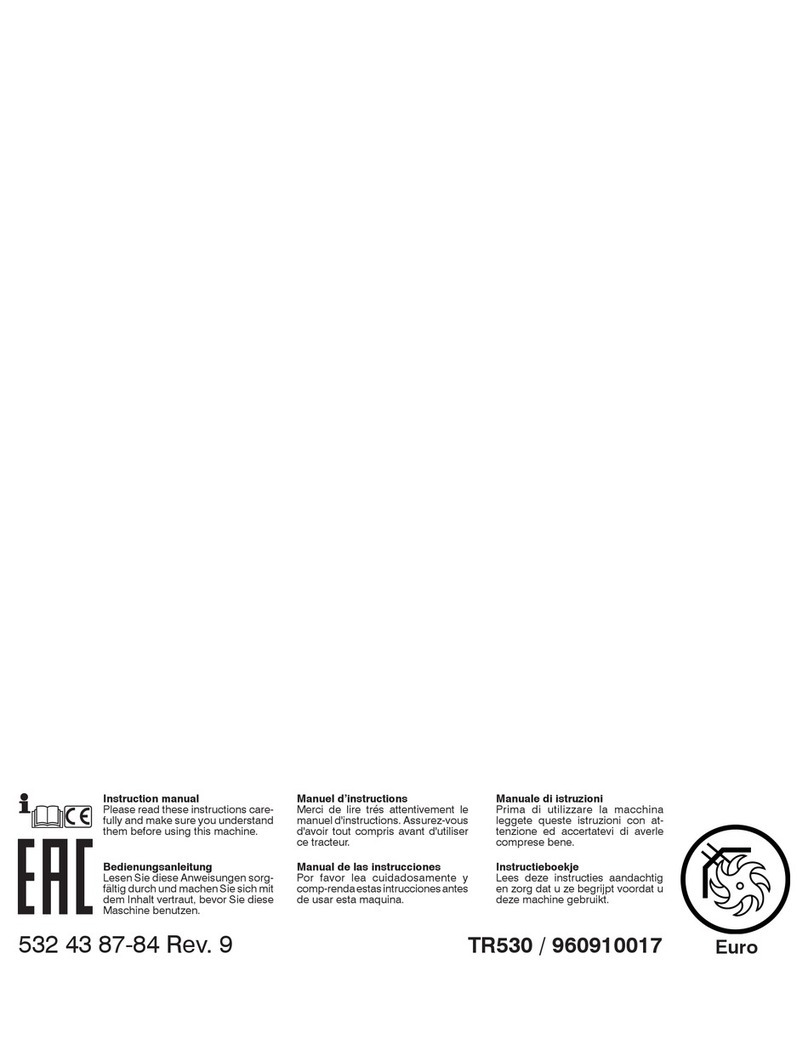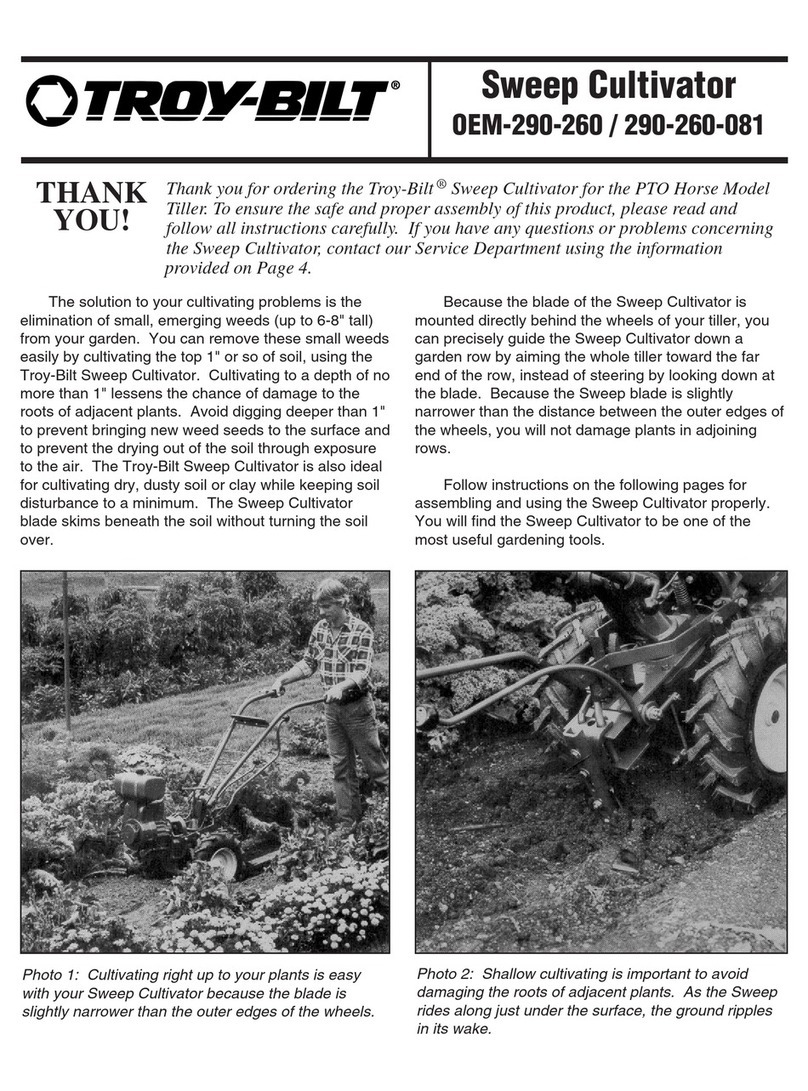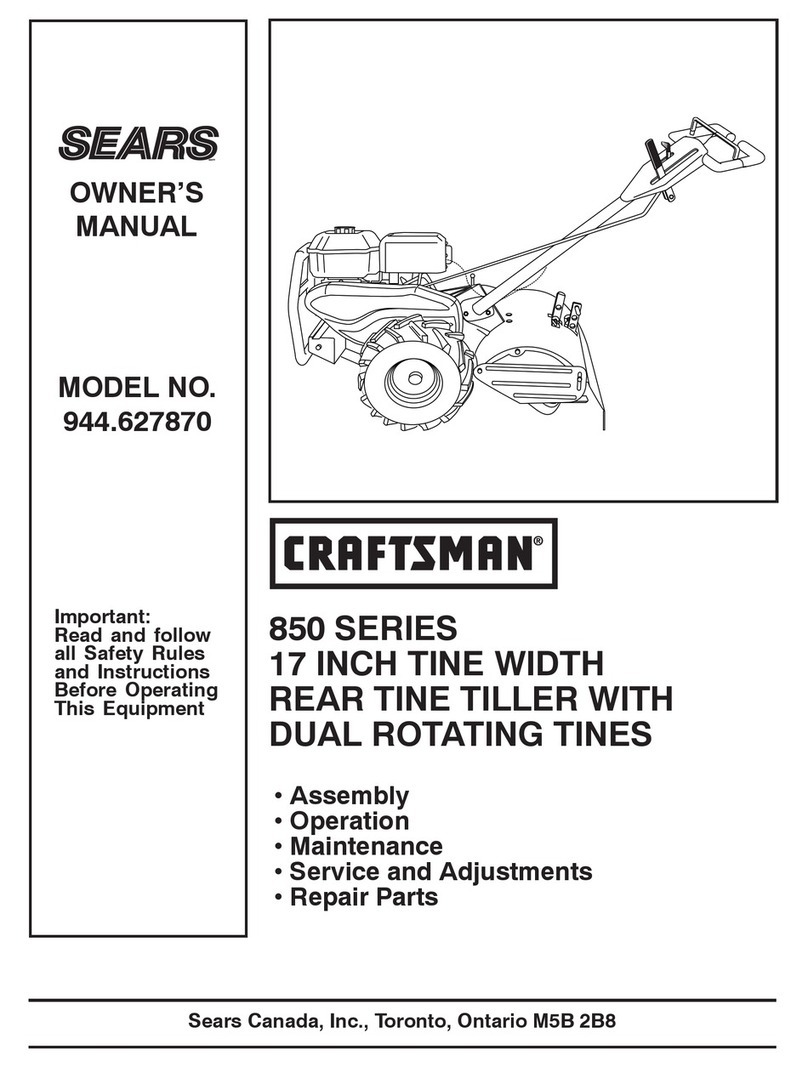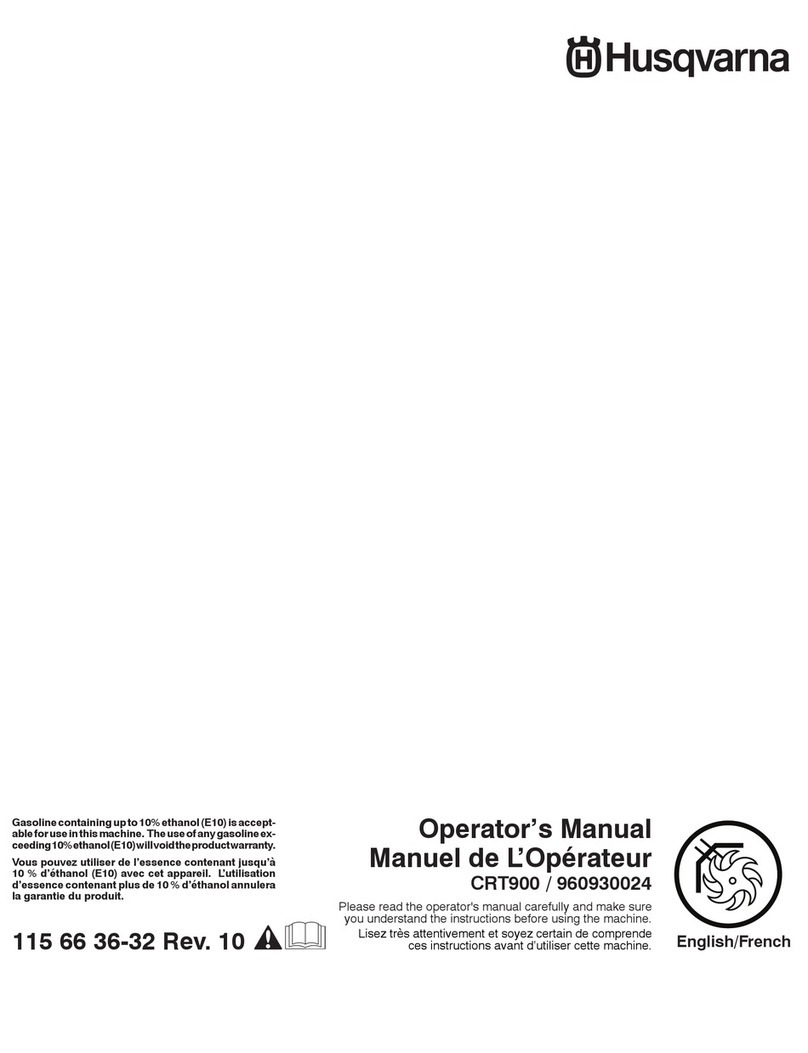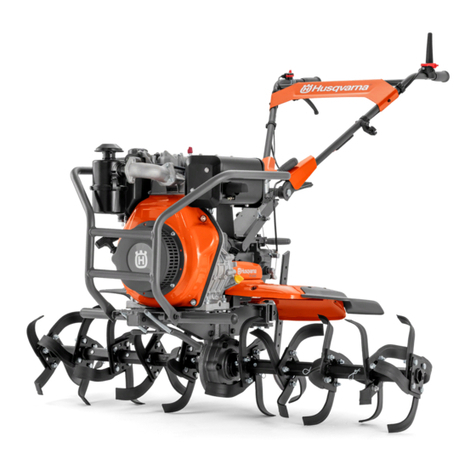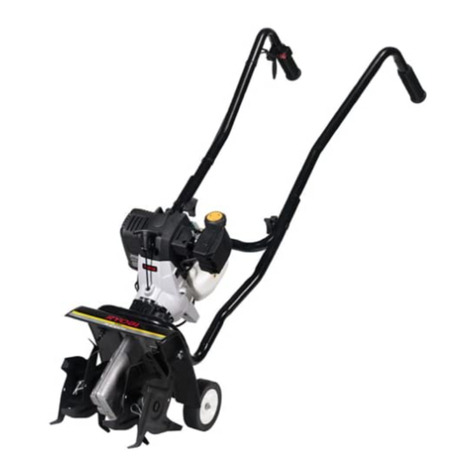
2
SAFETY RULES
Safe Operation Practices for Tiller Attachments.
TRAINING
• Read the operating and service instruction manual
carefully. Be thoroughly familiar with the controls and
the proper use of the equipment. Know how to stop the
unit and disengage the controls quickly.
• Never allow children to operate the equipment. Never
allow adults to operate the equipment without proper
instruction.
• Keep the area of operation clear of all persons, partic-
ularly small children, and pets.
PREPARATION
• Thoroughly inspect the area where the equipment is to
be used and remove all foreign objects.
• Disengage all clutches and shift into neutral before
starting the engine (motor).
• Do not operate the equipment without wearing adequate
outer garments. Wear footwear that will improve footing
on slippery surfaces.
• Handle fuel with care; it is highly flammable.
• Use an approved fuel container.
• Never add fuel to a running engine or hot engine.
• Fill fuel tank outdoors with extreme care. Never fill
fuel tank indoors.
• Replace gasoline cap securely and clean up spilled
fuel before restarting.
• Never attempt to make any adjustments while the
engine (motor) is running (except where specifically
recommended by manufacturer).
OPERATION
• Do not put hands or feet near or under rotating parts.
• Exercise extreme caution when operating on or cross-
ing gravel drives, walks, or roads. Stay alert for hidden
hazards or traffic. Do not carry passengers.
• After striking a foreign object, stop the engine (motor),
remove the wire from the spark plug, thoroughly inspect
the tiller for any damage, and repair the damage before
restarting and operating the tiller.
• Exercise caution to avoid slipping or falling.
• If the unit should start to vibrate abnormally, stop the
engine (motor) and check immediately for the cause.
Vibration is generally a warning of trouble.
-IMPORTANT -
Cautions, Importants, and Notes are a means of attracting attention to important or critical information in this manual.
Caution: Look for this symbol to point out
important safety precautions. It means
-- Attention! Become Alert! Your safety
is involved.
• Stop the engine (motor) when leaving the operating
position, before unclogging the tines, and when making
any repair, adjustments, and inspections.
• Take all possible precautions when leaving the machine
unattended. Disengage the power take-off, lower the
attachment, shift into neutral, stop the engine, and
remove the key.
• Before cleaning, repairing, or inspecting, shut off the
engine and make certain all moving parts have stopped.
Disconnect the spark plug wire, and keep the wire away
from the plug to prevent accidental starting.
• Do not run the engine indoors; exhaust fumes are dan-
gerous.
• Never operate the tiller without proper guards, plates,
or other safety protective devices in place.
• Keep children and pets away.
• Do not overload the machine capacity by attempting to
till too deep at too fast a rate.
• Never operate the machine at high speeds on slippery
surfaces. Look behind and use care when backing.
• Lift tiller out of the ground when turning corners.
• Do not put tractor in reverse gear while tiller is in the
ground.
• Never allow bystanders near the unit.
• Use only attachments and accessories approved by
the manufacturer of the tiller (such as wheel weights,
counterweights, cabs, etc.
• Never operate the tiller without good visibility or light.
MAINTENANCE AND STORAGE
• Keep machine, attachments, and accessories in safe
working condition.
• Check shear bolts, engine mounting bolts, and other
bolts at frequent intervals for proper tightness to be sure
the equipment is in safe working condition.
• Never store the machine with fuel in the fuel tank inside
a building where ignition sources are present, such as
hot water and space heaters, clothes dryers, etc. Allow
the engine to cool before storing in any enclosure.
• Always refer to the operator’s guide instructions for im-
portant details if the tiller is to be stored for an extended
period.
NOTE: Gives essential information that will aid you to
better understand, incorporate, or execute a particular
set of instructions.
IMPORTANT: USED TO ALERT YOU THAT THERE
IS A POSSIBILITY OF DAMAGING THIS EQUIPMENT.
